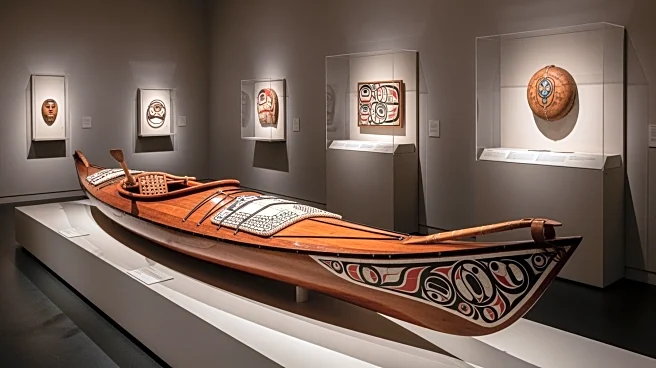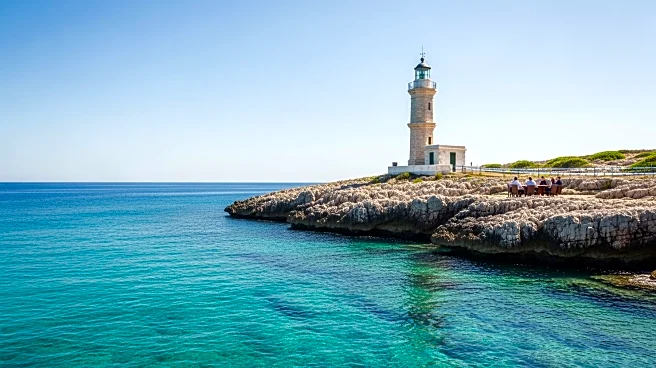What's Happening?
The Vatican Museums are set to return a centuries-old Inuvialuit kayak to the Canadian Museum of History in Gatineau, Québec. This kayak, one of only five in existence, was originally acquired by the Vatican during
a world exhibition organized by Pope Pius XI in 1925. The exhibition aimed to showcase tangible examples of Indigenous life from various regions, resulting in over 100,000 objects being sent to Rome. The kayak's return is part of a broader effort to restitute Indigenous artifacts, including a face mask from Haida Gwaii, beaded skin moccasins, birch bark etchings, and an ivory and sealskin sled sculpture. The Canadian Catholic Church and the Vatican are collaborating to facilitate the return by the end of the year through a 'church-to-church donation' process.
Why It's Important?
The return of the kayak and other artifacts is significant as it addresses historical injustices related to colonialism and the forced conversion of Indigenous peoples. These objects are considered sacred and crucial for the healing journey of many residential school survivors. The restitution process reflects a growing acknowledgment of the need to rectify past wrongs and restore cultural heritage to Indigenous communities. The Vatican's decision to return these items follows its formal disavowal of the 15th-century 'Doctrine of Discovery,' which was used as a legal framework for colonial projects. This move is seen as a step towards reconciliation and cultural restoration.
What's Next?
The artifacts will first be returned to the Canadian Museum of History before their final destinations are determined. Indigenous leaders emphasize the need for culturally informed restitution procedures, including ceremonies before the objects can travel back to their communities. There are concerns about the 'church-to-church donation' method, with calls for First Nations to identify and claim their cultural heritage. The return of these items is expected to foster dialogue and collaboration between the Vatican, Canadian authorities, and Indigenous communities, potentially leading to further restitutions.
Beyond the Headlines
The restitution of these artifacts highlights the ethical and cultural dimensions of returning Indigenous cultural heritage. It underscores the importance of acknowledging and addressing the impacts of colonialism and the role of institutions like the Vatican in these historical processes. The return of these items may inspire other institutions to examine their collections and consider similar restitutions, contributing to a broader movement towards cultural justice and reconciliation.











